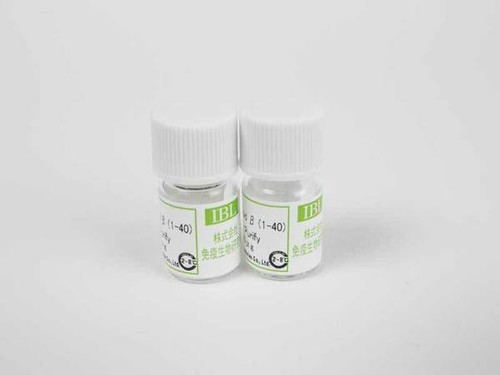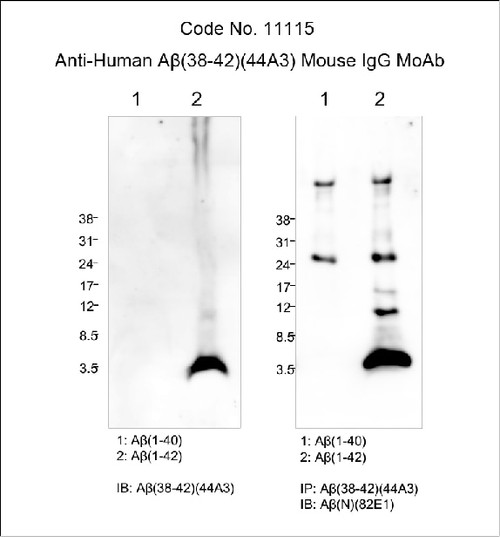Alzheimer’s disease (AD) is characterized by the presence of extracellular plaques and intracellular neurofibrillary tangles (NFTs) in the brain. Aggregation of the 42-mer amyloid β-protein (Aβ42) plays a critical role in the pathogenesis of AD. Shirasawa and Irie et. al have proposed a toxic conformer with a turn at positions 22 and 23, as well as a nontoxic conformer with a turn at positions 25 and 26, in Aβ42 aggregates from systematic proline scanning and solid-state NMR studies. This monoclonal antibody named 11A1 was developed for toxic Aβ42, using E22P-Aβ10-35, a minimum moiety for neurotoxicity containing the turn at positions 22 and 23, for the generation. Immunohistochemical studies showed that not only extracellular but intracellular amyloid was stained in human AD brains, which suggest that 11A1 could detect toxic oligomers of Aβ with the turn at positions 22 and 23. For research use only, not for use in diagnostic procedures.
- application:
- IHC, WB, IP
- Catalog number:
- 10379
- clone:
- 11A1
- concentration:
- Please see datasheet
- Datasheet:
- formulation:
- Lyophilized product from PBS containing 1% BSA and 0.05% NaN3
- immunogen:
- Synthetic peptide of E22P- Amyloid Beta Aβ 10-35 part
- isotype:
- IgG1
- MSDS:
- notes:
- For research use only, not for use in diagnostic procedures.
The datasheet for this product (see above) is intended to serve as an example only. Please refer to the datasheet provided with the antibody for precise details. - Other names:
- Please see datasheet
- Protocol:
- size:
- 50 µg
- storage:
- Lyophilized product, 5 years at 2 - 8 °C; Solution, 2 years at -20 °C
- Species:
- Human
- Host:
- Mouse
- Additional info:
- References:







